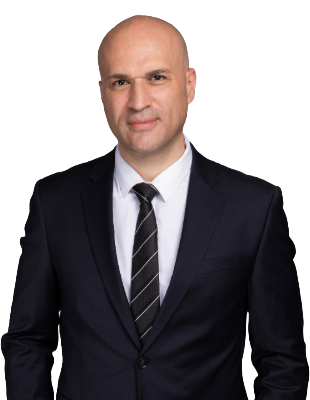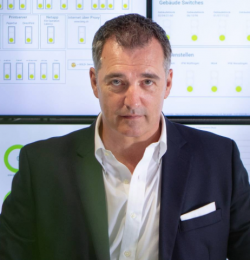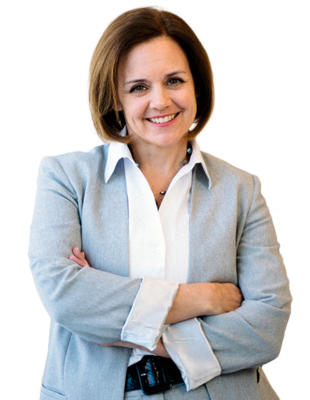 |
"As a CIO, I prioritize my time by aligning IT initiatives with the overall business goals, which ensures we’re working on the most impactful projects. I believe in empowering my team, which allows me to delegate effectively and focus on the broader strategy." Zeljko IvkovicCIO, ISS A/S |
 |
"The role of the CIO is becoming increasingly important to achieving businesses strategy. As a result, CIOs will need to be more strategic, innovative and business-focused." Brian RiceExecutive Vice President & Global CIO, McDonald’s Corporation |
 |
"The CIO role has been moving closer to the business for years, and that trend will continue. However, with the rise of SaaS platforms and accessible technology, the CIO’s legitimacy could be challenged if they’re not fully aligned with the business." Rebecca FoxGroup CIO, NCC Group |
 |
"Future CIOs will need to possess a deep understanding of finance, operations, and marketing-not just at a surface level to drive success in their organizations." Neema UthappaCIO, Oliver Wyman Group |
 |
"Innovation is impossible without questioning the status quo and creating disruption. But disruption only occurs when you have a team that can see a different point of view and push for progress." Robin SutaraField Chief Data Strategy Officer, Databricks |
 |
"Working in cybersecurity means being constantly on your toes, ready to learn and adapt to new threats. You must think like a hacker and react faster than them to protect critical business information." Ejona PreciGroup CISO, LINDAL Group, Founder & President WiCyS Germany |
 |
"What has likely made me an expert in my role is a combination of three key factors: a deep understanding of end-to-end business processes, the ability to engage in detailed technical discussions, and a product-building mindset." Luca Dell'OrlettaGlobal Head IT Innovation and Enterprise Architecture, Nestlé Group |
RECENT ISSUE
CIO-INSIGHTS

Howard Miller
Chief Information Officer, UCLA Anderson School of Management
Chief Information Officer, UCLA Anderson School of Management
Howard Miller is currently the Chief Information Officer at UCLA Anderson School of Management. Prior to joining UCLA, Howard was the Acting Chief Information Officer and CISO at the Columbia University School of Business, leading both the Information Security and Project Management Office functions. Howard is an accomplished executive and senior IT leader with expertise in the design, development, and deployment of technical strategy and policy. Howard holds an MBA degree in Management Information Systems and a Bachelor’s Degree in Computer Science from Rensselaer Polytechnic Institute. Howard also has several professional certifications, including PMP, CISM and CRISC.
In a recent interview with CIO Magazine, Howard Miller discussed his experience with leadership and technology. He shared his views on IT strategy evolution, technology investments, innovation, and agility, and many more.
What are some of the key leadership lessons you've learned throughout your career in IT strategy?
There are several key takeaways for me regarding good leadership. You need to be a good listener; you need to lead with empathy, and you need to build great relationships both within your team and with your business stakeholders. I’ve been able to sell my vision, both to my team and as it aligns to delivery on the school’s strategic plan.
How has IT strategy evolved over the past decade, and what major shifts do you foresee in the next five years?
Our IT strategy has changed about 2 or 3 times at my current employer in 6 years. After performing an initial assessment in the first 90 days, I was able to set a direction that embraced current technology, modernized a technology stack, and brought innovation to the forefront. In the middle, we had a good reminder that our business relationship mattered, and we needed to deliver on an improved customer experience. More recently, we’ve been focused on data, cybersecurity and AI. AI is here for a while, and quantum computing could be on our horizon in the next several years. Nevertheless, I foresee a continued focused on these three items, data, cyber and AI for a while. I don’t prefer to focus several years out, as a reminder, we’ve only really known about generative AI for a little over two years.
What are the biggest challenges organizations face when aligning IT strategy with overall business objectives?
The biggest challenges most organizations face with aligning IT strategy to overall business objectives are usually one of several things. Either IT doesn’t understand or doesn’t care to align to the business strategy. Additionally, some organizations suffer from having proper governance structures, in which case resources might be improperly allocated to those items most important to the business.
With AI, cloud computing, and cybersecurity becoming more critical, how should CIOs and IT leaders prioritize their technology investments?
Great question – and in general, those are the primary places where my technology investments are being made these days. The only item potentially missing from that list is data. Especially as data is the engine that feeds the AI. Regardless, the answer most closely matches the previous question – ensuring whatever investments are made in technology most closely align to the business objectives and business strategy, and in priority order to the extent possible.
How can businesses balance innovation with risk management in their IT strategies?
Those businesses that are most successful figure out a way to innovate, period. There are lots of cliches like “fail fast”, etc. but playing it too safe can ultimately be too limiting to your business. I think you need, as a leader, to figure out when it makes sense to take chances, find products or ideas that can transform your business or provide competitive advantage, and then confidently execute with conviction.
What role does IT leadership play in driving digital transformation, and how can leaders ensure company-wide adoption?
In 2025, IT leadership plays a significant role in driving digital transformation. Today’s organizations expect their IT leaders to be at the forefront of digital transformation. IT leaders have never had a better opportunity to deliver business objectives with technology and generally try to ensure company-wide adoption via organization change management techniques – communication and clearly articulating the benefits of the change.
What skills do modern IT leaders need to stay ahead in an increasingly tech-driven business environment?
There are several skills that modern IT leaders need to stay ahead, the most important of which is to truly understand the value of business relationships. Additionally, as previously discussed, being well-versed in as many things AI, data, and cybersecurity-related, even at a high-level, are extremely important today.
How do you foster a culture of innovation and agility within IT teams to support long-term strategic goals?
The best way to foster a culture of innovation and agility within IT teams in to lead by example, try new things, challenge people to step out of their comfort zones, and identify solutions that will add value to your business. I continue to identify and work with business partners who have solutions that align to my goals of reducing technical debt, adding in automation, making us more secure, and making sure that we are working on things that are technically modern and relevant.
What advice would you give to aspiring IT leaders looking to make a lasting impact in their organizations?
Take risks, try to get noticed, volunteer, and speak with your leadership about your individual career and developmental plan. If you wait around for someone to give it you, you’ll likely be waiting a long time, so be proactive.

Alasdair Redmond
Chief Information Officer, Endava
Chief Information Officer, Endava

Rebecca Fox
Group CIO, NCC Group
Group CIO, NCC Group

Miloš Topić
Vice President for IT (CIO) & Chief Digital Officer, Grand Valley State University
Vice President for IT (CIO) & Chief Digital Officer, Grand Valley State University

Tom Murphy
SVP IT and University CIO, University of Pennsylvania
SVP IT and University CIO, University of Pennsylvania

Dr Mpofu Stanley Mgobansimbi
CIO, University of the Witwatersrand
CIO, University of the Witwatersrand

Frank Sweeney
CIO, Arizona Department of Child Safety
CIO, Arizona Department of Child Safety

Luca Dell'Orletta
Global Head IT Innovation and Enterprise Architecture, Nestlé Group
Global Head IT Innovation and Enterprise Architecture, Nestlé Group

Kristie Grinnell
Senior Vice President and Chief Information Officer, DXC Technology
Senior Vice President and Chief Information Officer, DXC Technology

Darin Morrow
Chief Transformation Officer, The Honey Baked Ham Company, LLC
Chief Transformation Officer, The Honey Baked Ham Company, LLC

Sharon Ng
Senior Director- Regional Solutions Area Lead at Avanade
Senior Director- Regional Solutions Area Lead at Avanade

Noel Toal
Chief Information Officer, DPV Health
Chief Information Officer, DPV Health

James Thang
Group Chief Information Officer (CIO), UCSI Group
Group Chief Information Officer (CIO), UCSI Group

Alexander Nelles
Chief Information Officer, Kantonsspital Winterthur
Chief Information Officer, Kantonsspital Winterthur
C-SUITE PROFILES
BUSINESS CHRONICLES
EXECUTIVE OP-EDS
Transformative Leadership in the Fourth Industrial Revolution
Ali Katkhada
Group CIO, Depa Group
Group CIO, Depa Group
Building a Strong AI Governance, Risk, and Compliance (GRC) Program: A CIO-CISO Collaboration Guide
Don Cox
Chief Information Security Officer, American Public Education, Inc.
Chief Information Security Officer, American Public Education, Inc.
Unlocking the Value from M&A
Simon Ratcliffe
Fractional CIO, Freeman Clarke
Fractional CIO, Freeman Clarke
The CIO’s AI-First Strategy: How to Drive Business Value with GenAI
Dr. Mark Weisman
Chief Information Officer, TidalHealth, Inc.
Chief Information Officer, TidalHealth, Inc.
TECH TALKS
How Security Teams Stay Agile in a Rapidly Evolving Field
Bradley Schaufenbuel
Vice President and Chief Information Security Officer, Paychex
Vice President and Chief Information Security Officer, Paychex
Pioneering Responsible AI for a Better Tomorrow
Heather Dawe
Chief Data Scientist, UST
Chief Data Scientist, UST
Safeguarding Patient Trust in the Era of AI
Karen Habercoss
Vice President, Chief Information Security and Privacy Officer, University of Chicago Medicine Health System
Vice President, Chief Information Security and Privacy Officer, University of Chicago Medicine Health System
Empowering Underserved Communities through Education and Technology
Alex Ustaris
CTO, PHINMA Education
CTO, PHINMA Education
































